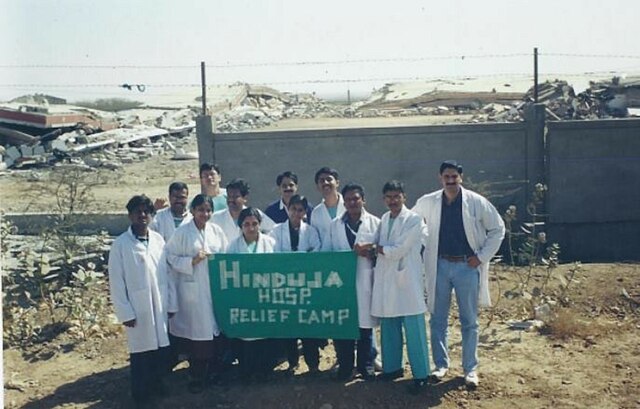Disaster response refers to the actions taken directly before, during or in the immediate aftermath of a disaster. The objective is to save lives, ensure health and safety and to meet the subsistence needs of the people affected. This includes warning/evacuation, search and rescue, providing immediate assistance, assessing damage, continuing assistance and the immediate restoration or construction of infrastructure. The aim of emergency response is to provide immediate assistance to maintain life, improve health and support the morale of the affected population. Such assistance may range from providing specific but limited aid, such as assisting refugees with transport, temporary shelter, and food to establishing semi-permanent settlements in camps and other locations. It also may involve initial repairs to damage or diversion to infrastructure.
Relief camp at Bhuj after the 2001 Gujarat earthquake
Disaster risk reduction (DRR) is an approach for planning and taking steps to make disasters less likely to happen, and less damaging when they do happen. DRR aims to make communities stronger and better prepared to handle disasters. When DRR is successful, it decreases the vulnerability of communities because it mitigates the effects of disasters. This means DRR can reduce the severity and number of risky events. Since climate change can increase climate hazards, DRR and climate change adaptation are often looked at together in development efforts.
Landmines are also a hazard that cause much loss of life and injury. Female de-miners in Lebanon set off to clear landmines.
Different kinds of disasters
People have adapted the design of houses to protect them from rising flood waters. Small boats are used to transport people and food to sustain livelihoods. This kind of disaster risk reduction is also a method for climate change adaptation
Panel on Disaster Risk Reduction in the age of Climate Change during a 2012 European Union Development Day





